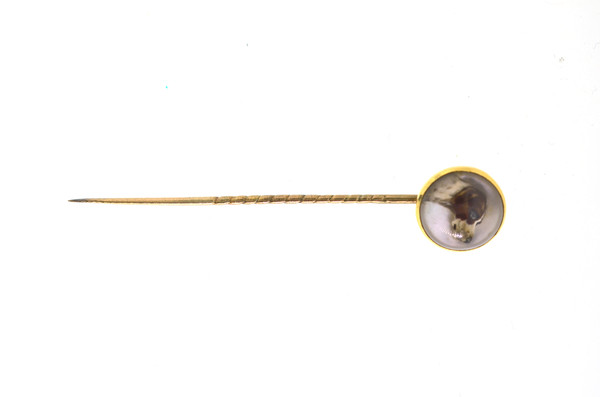
“NOT WORTH A PIN."
WE are accustomed to look upon pins as valueless; and the saying, "Not worth a pin," is common among us. But this expression would not have suited our great-grandmothers. They knew the worth of a pin.
Metal pins were first used by English ladies about the beginning of the sixteenth century; and they were so expensive that a lady was very glad to have one given her for a New-Year's gift.
This is why a sum of money was settled upon ladies at their marriage for the toilet, and called "pin money."
Fifty years ago, it took twenty people to make a pin—one to draw out the wire, to straighten it, a third to cut it, a fourth to point it, and a fifth to grind the top, and so on. The pins of today are made by machinery; consequently they are cheaper than ever. The value of a pin is as nearly nothing now as anything can be. A noisy, rattling, snappy little machine turns out between two and three hundred pins every minute, so quickly that it is impossible to count them as they fall. First, the end of the wire is seized by this devouring little monster, drawn off the reel, and straightened as it travels on to be cut; then a pin's length is pushed in, and held fast by a kind of nipper, while an iron something snaps down with a rap, and leaves the pin's length with a neat little head; then away it slides off an incline into a tray, where its straight shank slips through a small slit, which allows it to hang by the head, in company with many others. As they dangle here, their blunt ends are sharpened by a revolving steel roller which bristles over with vicious, file-like teeth. As each pin is pointed, it is pushed on and out of the way by others that want attending to. After this, they have to be whitened and brightened, in order to be what we describe "clean as a new pin."
They are laid in a large copper vessel filled with alternate layers of pure-grain tin and pins; then they are covered with water, and sprinkled with cream of tartar, and slowly heated. The acid acting on the tin produces solution of tin; the property of which is to give them that pretty new look we know so well. After this, they are washed, dried, and shaken about in a bag filled with bran, to brighten them.
Who invented all this? Well, that I cannot tell you; the process grew and was improved upon by different people. Think of all this when you use the expression idly, "Not worth a pin."
Harper's Young People.